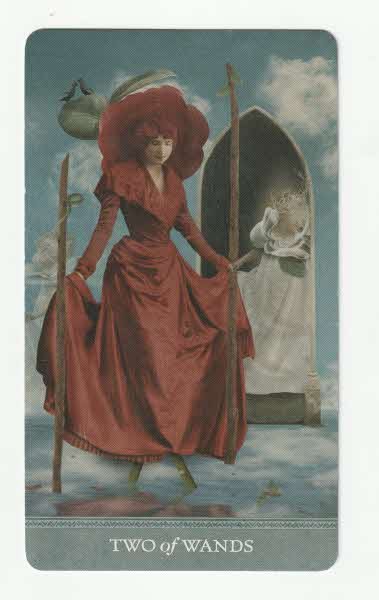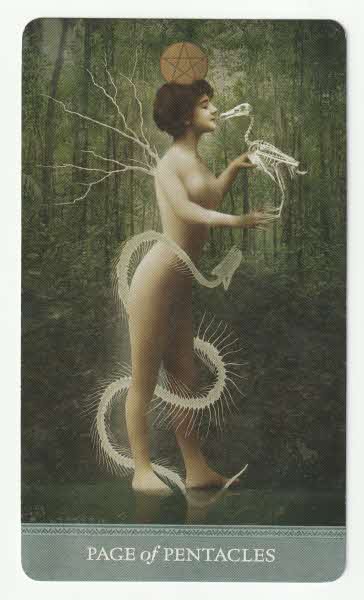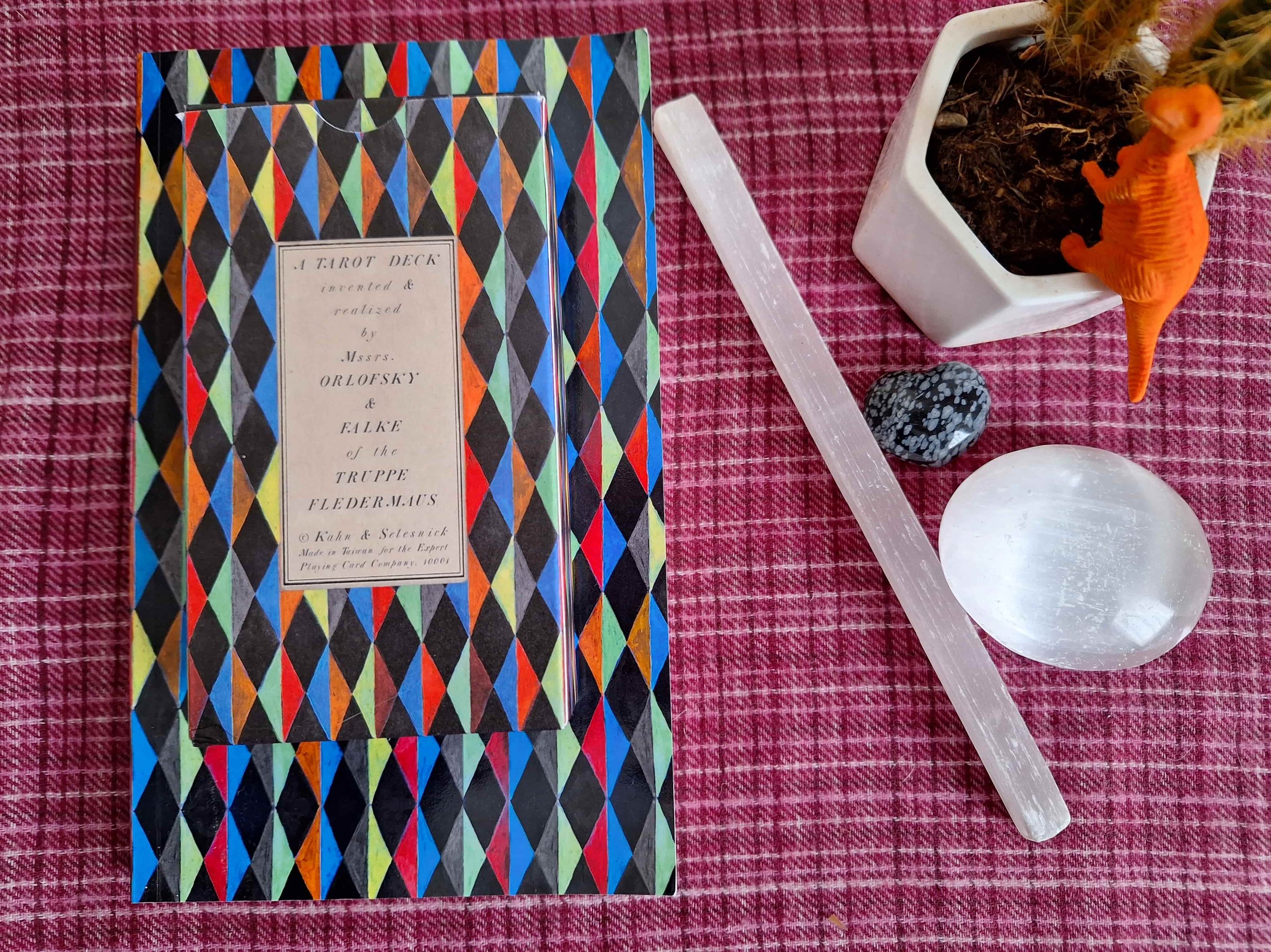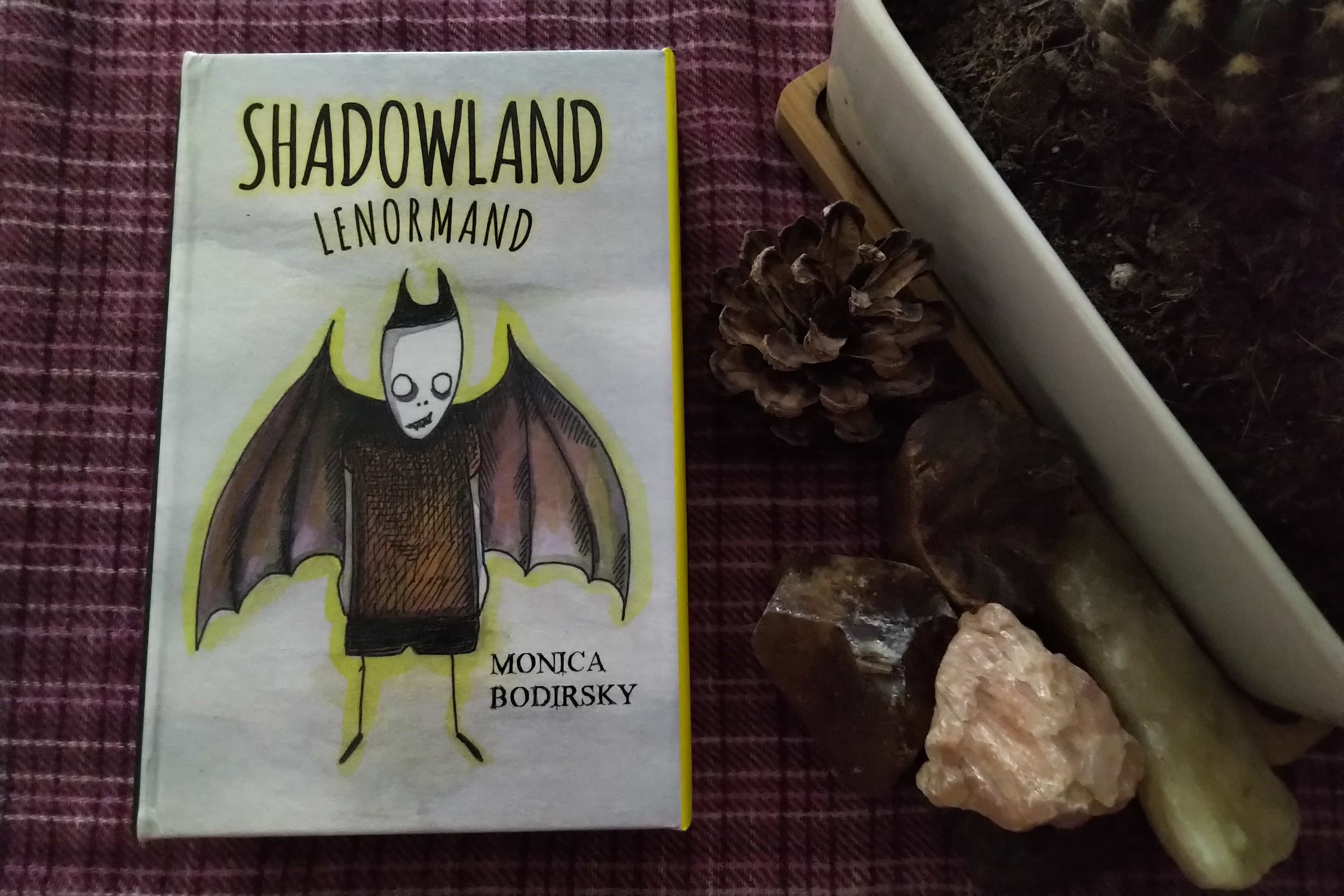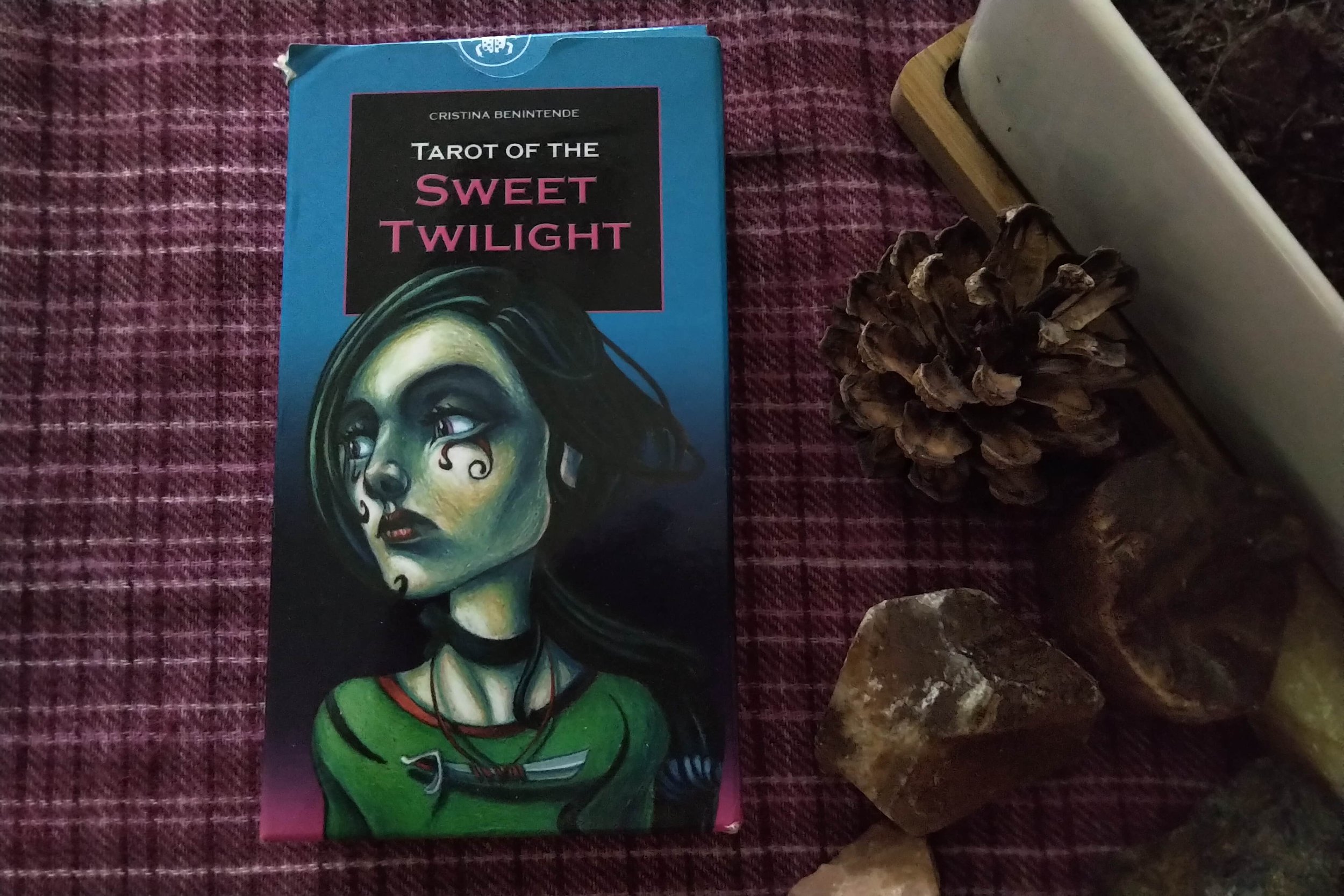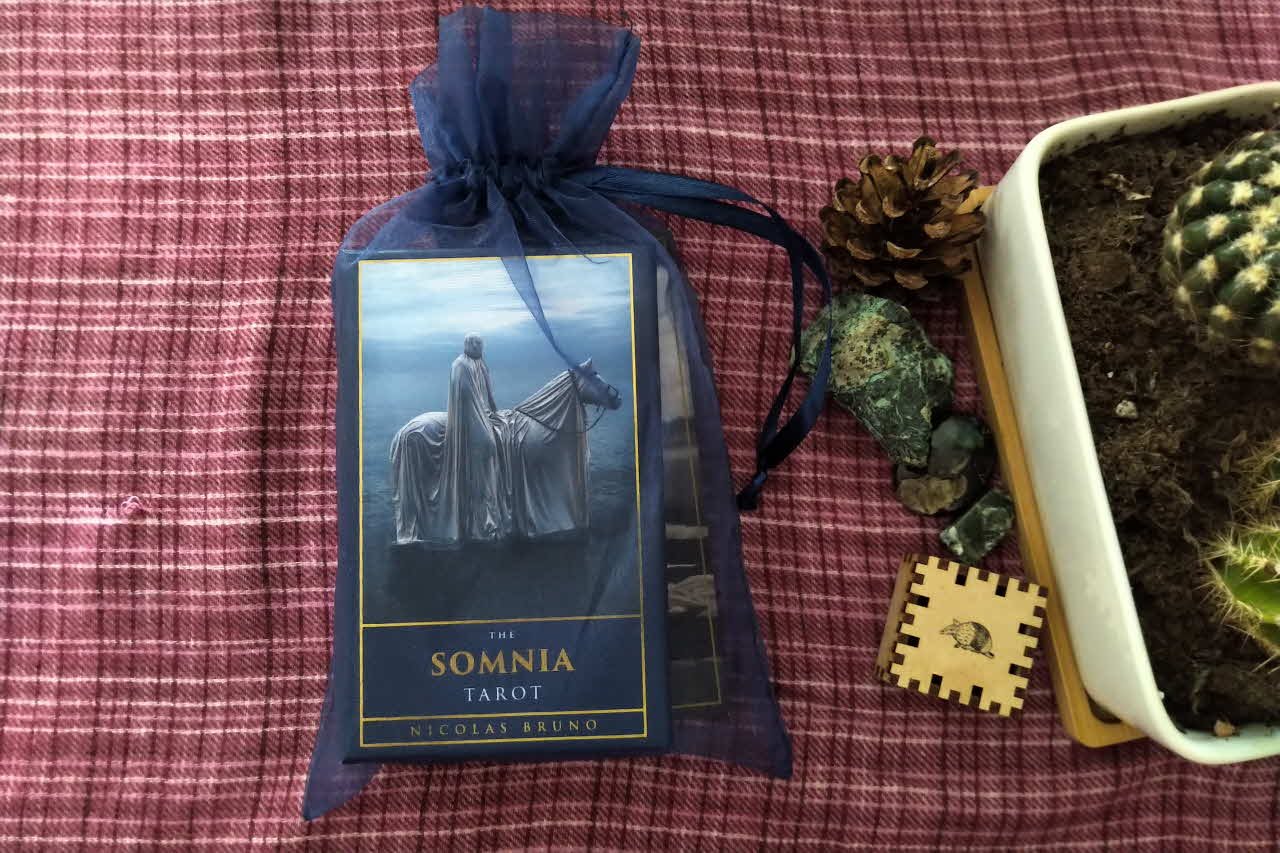The Dreamkeepers Tarot

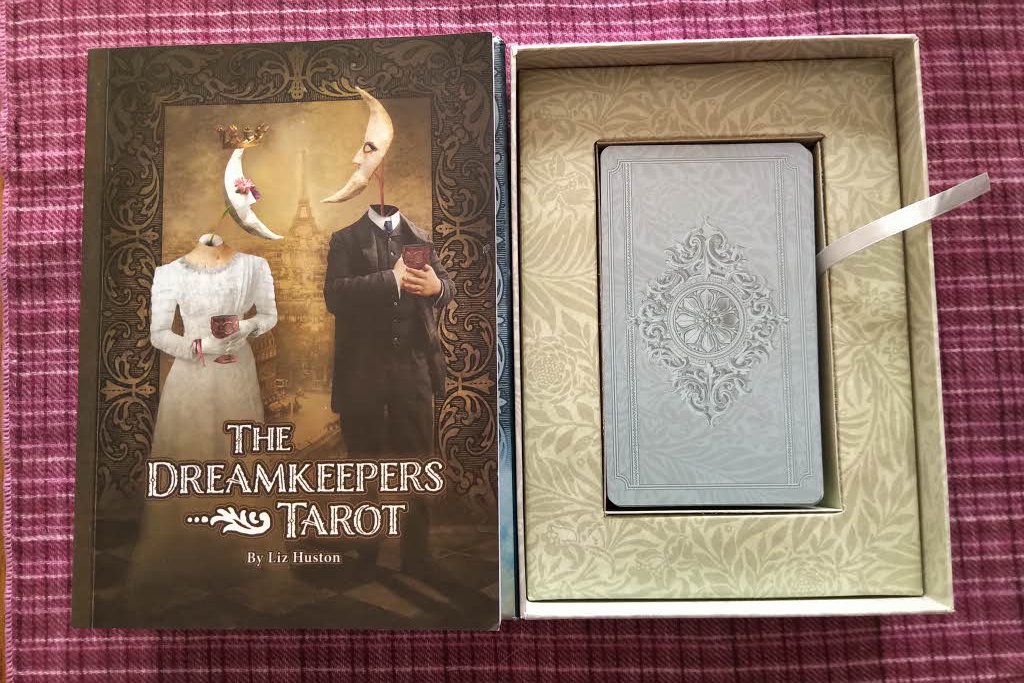
The Dreamkeepers Tarot is a lovely deck published in 2021. Liz Huston spent the best part of twelve years creating the images, and I like that she talks about this process at the beginning of the guidebook. Liz self-published the first edition in 2018, and US Games published this updated mass-market version in 2020. The cards are average-sized and laminated but easy to shuffle because they don’t stick together.







The major arcana is relatively traditional, with a few creative twists. The Lovers appears to emphasise a relationship where the couple is together. There is no sign of any third-party involvement nor anything else to indicate the person drawing the card has a choice. I love the woman's red dress; the colour symbolises passion, life force, and vibrant energy. An interesting detail shows her holding the gown open to reveal candle-like figures with moon heads. The figures could represent a connection to the moon and the natural cycles of life. The bird holding her mask is colourful and holds itself proudly. The man has a blackbird behind his mask, indicating one person is less complex than the other. Or possibly, one is a darker personality who is more in tune with deeper psychological motivations and privates, whereas the other is more outward-focused and social. The playing cards on his shirt could indicate further issues. Is he a player or just playing at being present? A gambler? Or is the relationship itself a gamble? The complete interpretation in the book is just short of two pages long. Huston says of this card, “Symbol of human love in its greatest expression”. Interestingly, Huston mentions the man’s shirt as ’a sense of not being as strong as his exterior would suggest, for inside, he is a house of cards, and is far more fragile than he lets on.’ Huston doesn’t limit this card to romantic pairings, mentions other deep committed relationships, and states that the duration may be short or long. Keywords given: Upright: Love, Relationships, Harmony, Positive choices, Values, Partnership. Reversed: Disharmony, Difficult relationships, Missed connections, Non-commitment. Huston’s reversed keywords avoid any mention of love triangles and instead focus on what are oppositions to the upright keyword meanings. I like she suggests non-commitment and also missed connections. So often, when this card appears, it is in the early stages of a new relationship. Its appearance is always significant, but so are the other cards that show up alongside it. When The Lovers card appears to those in a committed relationship, it generally points to a time of transition or reevaluation. It is painfully ordinary for the potential of a rewarding relationship not to be realised by one person or the other, so the reversed keywords make sense. One of the more significant questions this card asks is, ‘how are you going to relate to one another?’
The Devil is another beautiful card. I appreciate how Huston moved away from the traditional concept of a couple either standing or kneeling in bondage with the devil sitting on a throne. The imagery is intriguing. The naked devil whispering into the modestly dressed woman’s ear indicates temptation. She looks comfortable and does not appear forcibly bound to him. He holds a pomegranate in his left hand — a prompt to remember Persephone’s abduction into the underworld. Huston’s description in the book focuses on how the devil is not some discarnate entity but the untamed desires within. Two aspects of The Devil, addiction and materialism, are especially problematic when this card appears in connection with a relationship. The appearance of The Devil in a reading tells us a person is lost in addiction or maybe trapped within a status-obsessed marriage. Other cards will generally clarify the nature of the psychological shackle. For this card, Huston says, “Conscious bondage. Dwelling in the grip of the material world, enthralled by the lure of the senses”. Keywords given: Upright: Bondage, Materialism, Temptation, Addiction, Shadow self. Reversed: Liberation (from fears and/or self-destructive tendencies), Sobriety, Self-awareness.
If you don’t like reversed cards in your readings, you may want to pay more attention to the overall vibe of the cards that surround the main card in question. If the reading is generally positive and includes cards like the Star, the Sun, the four of wands, or the fool, it likely indicates that any issues shown by the devil are historical. The seven of cups would emphasise addictions like alcohol, drugs, and possibly sex. The Hierophant and the three of swords with this card could suggest an unhappy marriage. I’d also expect heavy sword activity to represent the mental conflict and perhaps the four, seven, or eight of cups to show emotional dissatisfaction.
In truth, I could happily write something about most of the majors because they’re all illustrated beautifully. The guidebook doesn’t disappoint. I like the descriptions and love Huston’s psycho-philosophical outlook.








The minors are individually detailed, which always adds worth to the overall deck. The cups’ suit is exceptionally well-executed. The four of cups show a melancholic woman keeling. Wounds are visible on her skin. Huston says of this card, “Dissatisfaction and an unwillingness to see what is offered.” Huston’s detailed description is brilliant and offers fresh insight into the four of cups. She explains how the heart above the woman’s head symbolises someone disconnected from their feelings. We have a crucial bit of information shown with her holding onto a mirrored face; her avoidance of looking at what she holds in her hands suggests a reluctance to face things head-on. One aspect of importance in this card is the danger of missing an opportunity for healing. Keywords given: Upright: Self-absorption, Apathy, Disillusionment, Boredom. Reversed: Withdrawal, Weariness, Missed chances, Desire for a new start. The six of cups is a sweet card with two small barefoot girls sitting on the back of a swan-like creature as it glides through the air. The girls jointly hold onto a single cup with five other cups at the bottom of the picture. Overall, it’s a great representation of the often-ignored state of innocence within the six of cups. Huston says of this card — “Nostalgia and attachment to the past”. The shared cup indicates sharing resources, and the closeness suggests warmth. The book’s description mentions how the skeletal body of the swan is a reminder that the past has gone, but memories remain. Keywords given: Upright: Goodwill, Innocence, Childhood, Beginner’s mind. Reversed: Living in the past, Nostalgia, Childishness.
Many readers see the eight of cups as an ending, although this is not necessarily true unless other ‘ending’ cards are present (especially the three or the ten of swords). The eight of cups can indicate an uncomfortable emotional state and usually talks about moving on or away from old situations. I love the presence of the hourglass in the woman’s hand. The tiny birds flying behind her head could symbolise a multitude of thoughts. A boney arm holds onto the woman’s shoulder, yet she faces away in the direction of a disembodied woman in white, symbolic of her future self. Huston says this card represents “Leaving known success behind in search of greater meaning”. This card is often an early warning that something needs to change because something simply isn’t working. The tarot says we risk losing too much energy if we try to stay as we are. I’ve found this card appears typically when a person is already aware that change needs to occur, but they’re often emotionally drained and lack the impetus to do what is necessary. Keywords given: Upright: Search for deeper meaning, Change, Transition, Weariness, Travel. Reversed: Confusion, Uncertainty, Loneliness, Loss.

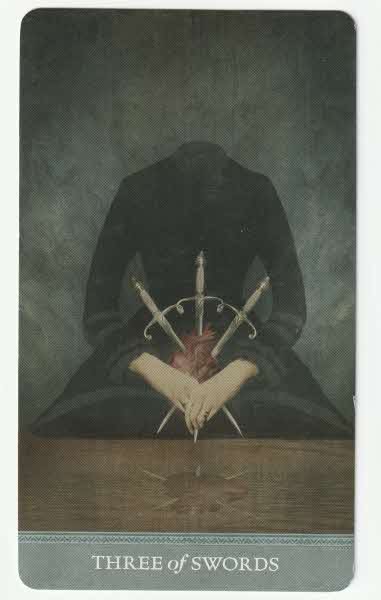
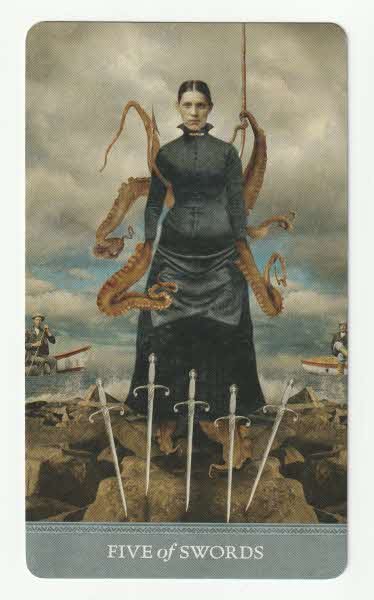





The swords are another excellent suit. The headless woman in the three of swords holds a heart pierced with three daggers. I would’ve liked to see more information as to why Huston decided to use the image she did. Instead, the description talks about loss and separation, which is undoubtedly relevant; I’d like to have seen more explanation of the symbolism. Maybe it was to keep the focus on the heart and daggers? It’s also possible the missing head could be symbolic of the part where Huston mentions the disconnect from our senses when experiencing grief. Of this card, she states, “Separation, loss and/or betrayal from someone close.” Keywords given: Upright: Heartbreak, Loneliness, Betrayal, Sorrow, Grief. Reversed: Reconciliation, Apologies, Course correction. The five of swords is a more complex image. It shows a woman with octopus arms caught on a hook. Behind her, we can see a fisherman on either side. The five swords are in front of her but within arm’s reach. The fishermen seem relaxed and sit watching her from the safety of their boats. Huston’s description gives “A no-win situation.” — a common scenario when this card appears in a reading. I like Huston’s full description in the book — she mentions how this card generally indicates a situation with no long-term value. She points out that it is worth considering whether a current conflict is worth the stress. The five of swords is not a positive card by any means, but it’s a great card in that it’s telling you in no uncertain terms that, on some level, you’re fighting a losing battle. Knowing when to throw in the towel to save further pointless injury is a gift. Keywords given: Upright: Self-interest, Discord, Dishonour, Severing ties. Reversed: Intrigue, Deception, Hubris.
The eight of swords card evokes the feeling of something mythic. A giant woman floats on top of the ocean. Her dress falls open from the heart, and two ships sail underneath. Despite having no sign of the Kraken, the eight of swords makes me think there is likely something perilous in the water. Huston says of this card — “Feeling trapped inside a self-imposed prison; pervasive fears and doubts”. The book’s full description talks about having little choice but to move forward and being trapped by one’s thoughts. I like that Huston clarifies that listening to the heart will enable the person to move forward. Keywords given: Upright: Restriction, Powerlessness, Negative thoughts, Victim mentality. Reversed: New perspective, Beginning of liberation, Pressures ease. The eight of swords is one of those cards that often comes up in a reading where a person is stuck in their head — they’re going around and round in circles. I find it interesting that the woman in the image has mist surrounding her head and covering her eyes. The card could be suggesting there’s a need to rely more on the body sensations rather than logic.
I enjoy this deck immensely and reach for it often — it is perfect for regular use. I love the style of imagery, and the cards speak freely; there’s a ton of hidden symbolism for those with a penchant for iconography. I find the book to be an absolute blessing because it’s well-written. The Dreamkeepers Tarot is accessible for new students and provides enough insight to keep the old-timers happy. Huston’s language is clear throughout; this is important because when we stick the tarot on the table, it’s generally because of an abundance of confusion and/or chaos. There is much I find impressive about this deck, but mostly I love it because Huston’s personal love for the tarot shines through in the finished product.






